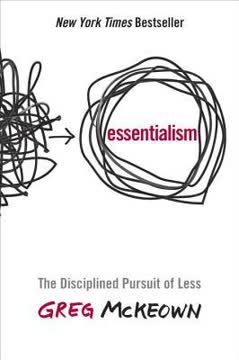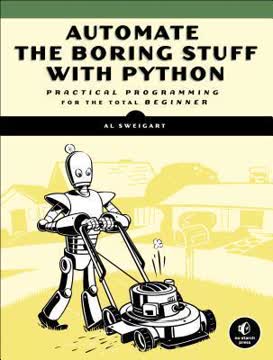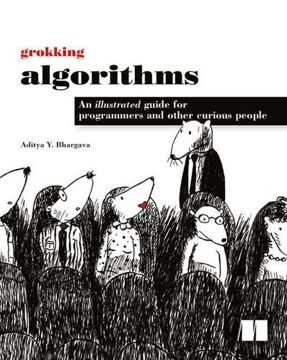つの重要なポイント
1. 問題解決は単なる文法の理解を超えるもの
本質的に、多くの初心者向けプログラミング書籍は、プログラムの読み方を教えるものであり、書き方を教えるものではない。
文法と問題解決の違い。 多くのプログラミング志望者が苦戦するのは、プログラミング言語の文法を学ぶことだけに注力し、それをオリジナルのプログラムを書く能力と誤解しているからだ。文法の理解は不可欠だが、それはあくまで第一歩に過ぎない。真の挑戦は問題解決にあり、問題の記述を動作するプログラムに翻訳する能力こそが重要である。
創造的スキルと分析的スキル。 問題解決には文法学習とは異なる思考力が求められる。文法習得は主に分析的で「左脳的」な活動であり、記憶と理解を伴う。一方、オリジナルのコードを書くことは創造的で「右脳的」な活動であり、学んだ道具を新しい方法で組み合わせる独創性が必要だ。
レシピ本を超えて。 「レシピ本」や既成のコード例に頼り切ることは、真の問題解決能力の育成を妨げる。これらは時間短縮には役立つが、優れた料理人が独自の料理を生み出すために必要な材料や調理法、技術の深い理解を促さない。同様に、優れたプログラマーは言語文法、アプリケーションフレームワーク、アルゴリズム、ソフトウェア工学の原則を理解し、仕様から独自のプログラムを創り出すことができる。
2. 形式的な言い換えが隠れた解決策を引き出す
問題をより形式的に言い換えることは、問題への洞察を得る優れた手法である。
新たな視点の獲得。 問題を異なる言葉や角度から言い換えることで、これまで見えなかった解決策が浮かび上がることがある。これは、山を登る前にあらゆる方向から眺めて、最も楽な登山ルートを探すようなものだ。この手法は、最初に思っていたものとは異なる真の目的を明確にすることもある。
制約条件と操作。 形式的な言い換えは、問題の中にある制約(破ってはならないルール)と操作(可能な行動)を明確にすることを含む。これらをリストアップすることで、見落とされがちな解決策を発見できる。例えば、古典的な「キツネ、ガチョウ、トウモロコシ」の謎では、制約と操作を形式的に示すことで、川を渡ったものを戻すという多くの人が最初に考えない手段が見えてくる。
考えることと解くこと。 問題そのものについて考えることは、解決策について考えることと同じかそれ以上に生産的であることがある。問題を形式的に言い換えることで、その構成要素や関係性を分析せざるを得なくなり、貴重な洞察や解決への明確な道筋が得られることが多い。
3. 分割統治:複雑さを分解する
問題を段階やフェーズに分ける方法を見つけることで、問題は格段に容易になる。
難易度の軽減。 問題をより小さく扱いやすい部分に分割することで、全体の難易度を大幅に下げることができる。各部分を解く労力は、全体を一度に解く労力よりもずっと少ないことが多い。これは、プログラミング技術を組み合わせることが、単独で使うよりもずっと難しいためである。
ソートの例え。 100個のファイルをアルファベット順に並べる場合、25個ずつ4つのグループに分けて並べる方が、一度に100個全部を並べるよりもはるかに楽だ。これは、ファイルを挿入する作業が、既に並んでいるファイルの数に比例して増えるためである。
連続的技術と複合的技術。 forループの中にwhileループ、その中にif文があるコードは、同じ制御文を順番に使うコードよりも書くのも読むのも難しい。問題を分割することで、コードを簡潔にし、認知的負荷を減らすことができる。
4. 類推は問題間の架け橋となる
熟練の問題解決者は、解決済みの問題と未解決の問題の間にある類似点、すなわち類推を素早く見抜く。
類似点の活用。 現在の問題と過去に解決した問題の間にある類似点を認識することは、強力な問題解決手法である。類似点は問題の一部に限られることもあるが、貴重な洞察や近道を提供してくれる。
クアラシ錠の例。 クアラシ錠の問題は、余計な詳細や異星の技術で覆い隠されているが、本質的には「キツネ、ガチョウ、トウモロコシ」の謎と同じである。この類推を認識すれば、新たに解決策を作るのではなく、既存の解決策を翻訳して使うことができる。
解決策のライブラリ構築。 解決した問題が増え、深く理解するほど、類推のストックは増えていく。だからこそ、理解せずにコードをコピーするような近道は避けるべきだ。書いたすべての成功したプログラムは、現在の問題の解決策であるだけでなく、将来の問題を解くための類推の源泉でもある。
5. 計画は挫折を防ぎ、進捗を導く
方向性のない活動に没頭するのではなく、常に計画を持つべきである。
アイゼンハワーの教え。 「計画は役に立たないことが多いが、計画することは不可欠だ。」計画の詳細は予期せぬ困難に直面して変わることもあるが、計画する行為自体が成功の鍵となる。
中間目標の設定。 計画がなければ、目標は「問題全体を解くこと」だけになり、努力の成果が最後まで見えず挫折しやすい。計画があれば中間目標を設定し、進捗を追跡し、自信を積み重ねることができる。
フレミングの発見。 ペニシリンの発見は単なる偶然ではなく、綿密で制御された実験の結果であった。計画は予期せぬ出来事の重要性を認識し、それを貴重な洞察に変えることを可能にする。
6. 配列:データ整理の基本ツール
本書で扱うテーマは、新人プログラマーが最も苦戦する分野である。
変数の集合。 配列は同じ型の変数を一つの名前でまとめ、数値の添字でアクセスできる基本的なデータ構造である。この整理により、関連するデータの効率的な格納と取得が可能になる。
基本操作。 配列の主な操作には、値の格納、配列(またはその一部)のコピー、添字による値の取得、特定の値の検索、要素の並べ替え、配列内容に基づく統計計算などがある。
単純なデータを超えて。 配列は構造体やオブジェクトなど複雑なデータ型も格納でき、関連情報の集合を整理・操作することができる。この多様性が、幅広いプログラミング問題の解決に配列を強力な道具にしている。
7. ポインタ:動的メモリ管理の極意
C++は本物のプログラミングであり、補助輪なしの挑戦である。
動的割り当て。 ポインタは動的メモリ割り当てを可能にし、実行時にサイズが決まるデータ構造を作成できる。この柔軟性は、未知または可変サイズのデータセットを扱う際に不可欠である。
メモリ共有。 ポインタはメモリの共有を促進し、プログラムの異なる部分が同じデータにコピーのオーバーヘッドなしでアクセスできる。特に大規模データ構造を扱う場合、性能向上に大きく寄与する。
責任。 ポインタを使いこなすには、メモリ管理に細心の注意が必要だ。必要なときにメモリを割り当て、割り当てたメモリへのポインタを追跡し、不要になったら解放しなければ、メモリリークやその他のエラーを招く。
8. クラス:再利用性と明快さのためのカプセル化
これらの手法を学ぶことで、あなたの創造力を解き放つことができる。
データとコードの結合。 クラスはデータとそのデータを操作するコードを一つの再利用可能な単位にまとめる。これにより、モジュール化、整理、コードの再利用が促進される。
情報隠蔽。 クラスはデータメンバーへのアクセスを制御し、外部からの直接操作を防ぐことで情報隠蔽を実現する。これによりデータの整合性が保たれ、実装を変更してもクライアントコードに影響を与えない。
言語の拡張。 クラスは新しいデータ型を独自の振る舞いとともに作り出し、現実世界のオブジェクトや概念をコードで表現できるようにする。これによりコードの可読性と保守性が向上する。
9. 再帰:複雑な構造に対する優雅な解法
本書はあなたに何をすべきかを正確に指示するのではなく、潜在的な問題解決能力を育て、何をすべきか自ら判断できるように導く。
自己参照関数。 再帰は関数が自分自身を直接または間接的に呼び出す技法である。これにより、複雑な問題をより小さく自己相似な部分問題に分解して解くことが可能になる。
基本ケースと再帰ステップ。 再帰関数には、再帰を停止し直接値を返す基本ケースと、修正した入力で自分自身を呼び出す再帰ステップが必要である。
頭再帰と尾再帰。 頭再帰は他の処理の前に再帰呼び出しを行い、尾再帰は他の処理の後に行う。どちらを選ぶかはコードの効率や可読性に影響を与える。
10. コード再利用:効率と理解のバランス
ここでの最大の教訓は、類推を認識する重要性である。
車輪の再発明を避ける。 コード再利用は効率的なソフトウェア開発に不可欠だ。すべてを一から書くのではなく、アルゴリズム、パターン、抽象データ型、ライブラリなど既存の部品を活用する。
良い再利用と悪い再利用。 良い再利用は基礎概念を理解し、自分の問題に適応させること。悪い再利用は理解せずにコードを盲目的にコピーすることで、エラーや保守困難を招く。
コンポーネントライブラリの構築。 将来のプロジェクトで再利用できる、よく理解した部品の個人ライブラリを作ることを目指そう。これにより生産性が大幅に向上し、コードの質も高まる。
11. 強みを活かし、弱みを補う
本書の目標は、あなたを含むすべての読者が体系的にあらゆるプログラミング課題に取り組み、最終的に問題を解決できる自信を持つことにある。
自己認識が鍵。 最も効果的な問題解決法は、自分の強みを活かし、弱みを補う方法である。これには正直な自己評価と、それに応じた技術の適応が必要だ。
コーディングと設計の弱点。 自分のよくあるコーディングミスや設計上の欠点を特定し、それらを回避する戦略を立てることで、コードの質を向上させられる。
才能を活用する。 自分のプログラミングの強みを認識し、それを最大限に活かすマスタープランを設計しよう。これにより、より良い成果が得られるだけでなく、問題解決の過程もより楽しく充実したものになる。
最終更新日:
FAQ
What is Think Like a Programmer by V. Anton Spraul about?
- Problem-solving focus: The book centers on teaching creative and systematic problem-solving skills for programmers, rather than just coding syntax or language features.
- C++ as a teaching tool: While C++ is used for examples, the problem-solving strategies and concepts are applicable to any programming language.
- Comprehensive coverage: It spans fundamental programming constructs (arrays, pointers, classes) to advanced topics like recursion, dynamic memory, and design patterns.
- Goal of transformation: The ultimate aim is to help readers become confident, independent problem solvers who can write original programs from scratch.
Why should I read Think Like a Programmer by V. Anton Spraul?
- Develop a problem-solving mindset: The book addresses the often-missing skill of solving new programming problems, not just reading or modifying existing code.
- Structured learning approach: It provides systematic techniques and strategies to organize thoughts, break down problems, and build confidence.
- Long-term skill building: Readers learn to design robust programs, avoid common pitfalls, and think critically about code reuse and design decisions.
- Practical exercises: The book includes hands-on exercises to help internalize concepts and build real-world programming confidence.
What are the key takeaways from Think Like a Programmer by V. Anton Spraul?
- Always have a plan: Planning before coding is emphasized to avoid frustration and directionless activity.
- Restate and divide problems: Breaking problems into smaller, manageable parts and restating them can reveal easier solutions.
- Look for analogies: Recognizing similarities with previously solved problems accelerates finding solutions.
- Confidence through practice: Systematic practice and tackling exercises help build the confidence needed to solve novel programming challenges.
How does Think Like a Programmer by V. Anton Spraul define and teach creative problem solving in programming?
- Creative and systematic approach: Programming is presented as a creative activity, and the book offers systematic methods to unlock that creativity.
- Classic puzzles as teaching tools: Puzzles like the Fox, Goose, and Corn, sliding tiles, and Sudoku are used to illustrate problem-solving strategies.
- Emphasis on experimentation: Readers are encouraged to experiment, use what they know, and learn from controlled trials.
- Managing frustration: The book highlights the importance of managing frustration to maintain clear thinking and effective problem solving.
What are the most important problem-solving strategies in Think Like a Programmer by V. Anton Spraul?
- Always have a plan: Even if the plan changes, having one prevents aimless work and helps set intermediate goals.
- Restate and divide: Restating clarifies understanding, and dividing problems often reduces complexity exponentially.
- Start with what you know: Use existing skills and try small experiments to gain insight, especially with unfamiliar APIs or behaviors.
- Look for analogies: Drawing parallels to previously solved problems can lead to faster and more effective solutions.
How does Think Like a Programmer by V. Anton Spraul use C++ to teach problem solving?
- Assumes basic C++ knowledge: The book expects readers to know basic C++ syntax and semantics, focusing instead on problem-solving skills.
- Readable code examples: Code is written for clarity and understanding, often breaking down complex steps.
- Not a cookbook: The emphasis is on developing adaptable problem-solving skills, not memorizing recipes or algorithms.
- Active learning: Readers are encouraged to solve exercises themselves to internalize the concepts.
How does Think Like a Programmer by V. Anton Spraul explain arrays and their use in problem solving?
- Array fundamentals: Covers storing, copying, retrieving, searching, and sorting data using arrays.
- Problem-solving techniques: Demonstrates strategies like sorting before searching for the mode and using histograms for frequency counting.
- When to use arrays: Discusses scenarios where arrays are appropriate, such as when size is known or random access is needed.
- Alternatives to arrays: Introduces vectors and lists for cases where data size is unknown or sequential access is preferred.
What does Think Like a Programmer by V. Anton Spraul teach about pointers and dynamic memory management?
- Pointer basics: Reviews pointer declaration, dereferencing, dynamic memory allocation (new/delete), and assignment.
- Benefits of pointers: Explains how pointers enable runtime-sized and resizable data structures, and efficient memory sharing.
- Memory management pitfalls: Discusses stack vs. heap memory, fragmentation, memory leaks, and dangling pointers.
- Problem-solving with pointers: Provides examples like dynamic arrays for variable-length strings and linked lists for collections.
How does Think Like a Programmer by V. Anton Spraul introduce classes and object-oriented programming?
- Class fundamentals: Reviews class declarations, member variables, access specifiers, and constructors.
- Encapsulation and information hiding: Stresses making data private and exposing only necessary methods for robust design.
- Design for readability: Encourages clear naming and structuring for code that is easy to understand and maintain.
- Practical examples: Builds a studentRecord class from a struct, adding validation and constructors to illustrate OOP principles.
What practical advice does Think Like a Programmer by V. Anton Spraul give for designing and using classes?
- Encapsulation: Keep data private and provide only necessary access methods to protect implementation details.
- Divide and conquer: Use classes to break complex problems into manageable, reusable units.
- Readability and expressiveness: Choose method names and class structures that make code intuitive for users and maintainers.
- Testing and validation: Always consider edge cases and validate inputs within class methods for robustness.
How does Think Like a Programmer by V. Anton Spraul explain recursion and recursive thinking?
- Big Recursive Idea (BRI): Teaches that recursive calls can be thought of as calls to another function, simplifying the design of recursive solutions.
- Head vs. tail recursion: Explains the difference and uses real-world analogies to clarify when to use each.
- Common mistakes: Warns against too many parameters and the use of global variables in recursion.
- Natural fit for data structures: Shows how recursion is well-suited for dynamic structures like linked lists and binary trees.
What are the most common pitfalls and mistakes highlighted in Think Like a Programmer by V. Anton Spraul?
- Fake classes: Warns against creating classes that simply encapsulate global variables or force OOP where it doesn’t fit.
- Redundant data: Stresses that storing data that can be derived from other data leads to inconsistencies and bugs.
- Shallow copies and memory leaks: Explains the dangers of shallow copying objects with dynamic memory and the importance of deep copy implementations.
- Overcomplicating recursion: Advises against unnecessary parameters and global variables in recursive functions, which can make code harder to understand and maintain.
What are the best quotes from Think Like a Programmer by V. Anton Spraul and what do they mean?
- “Are you thinking like a programmer yet?” — Captures the book’s goal of transforming readers into creative, effective problem solvers.
- “Always have a plan.” — Emphasizes the necessity of planning before coding to avoid frustration and produce robust solutions.
- “Redundant data is trouble waiting to happen.” — Warns against storing unnecessary data, which can cause inconsistencies and bugs.
- “If you follow certain conventions in your coding, you can pretend that no recursion is taking place.” — Encourages simplifying recursive thinking by treating recursive calls as if they were calls to other functions.
- “Fake classes mean that the program has all of the same defects as one that uses global variables.” — Highlights the importance of proper class design to realize the benefits of object-oriented programming.
レビュー
『Think Like a Programmer』は評価が分かれており、平均評価は5点満点中3.86である。読者は問題解決のアプローチや演習を高く評価しており、プログラミングスキルの向上に役立つと感じている。著者の説明を称賛し、初心者にとって貴重な資料と考える声もある。一方で、C++に依存している点がアクセスの障壁となっているとの批判や、内容が基本的すぎる、あるいは学術的すぎると感じる意見もある。本書の論理的思考や問題の分解に重点を置く点は概ね好評だが、経験豊富なプログラマーにとっての有効性については賛否が分かれている。
Similar Books














